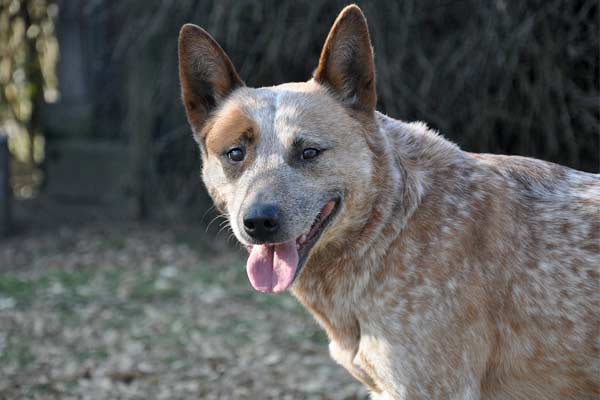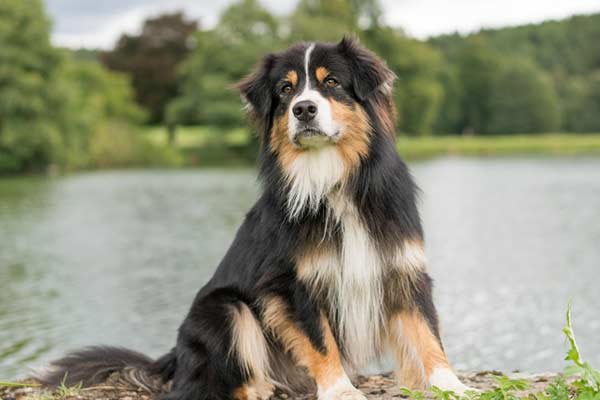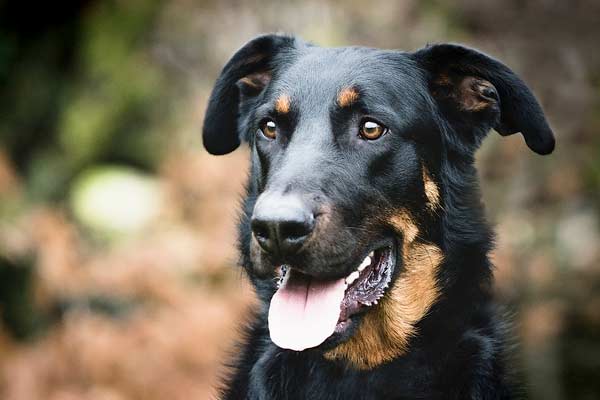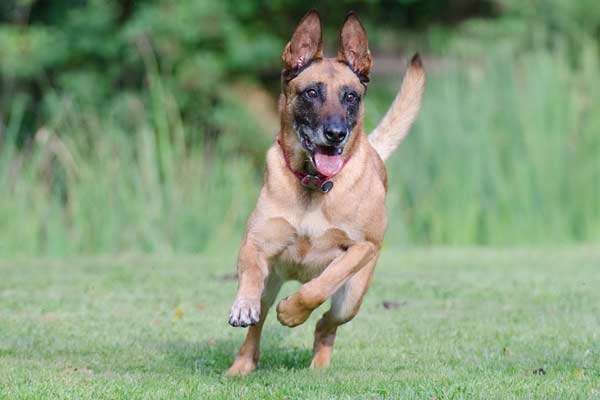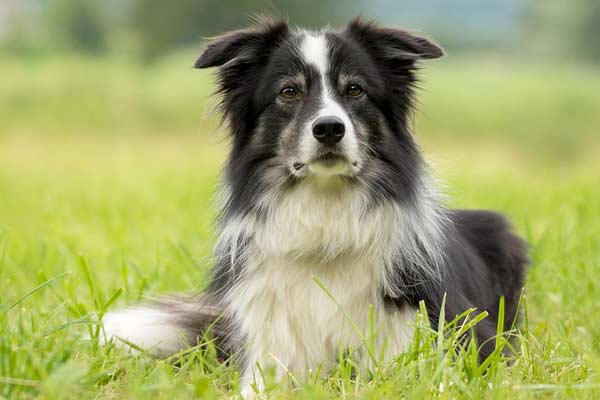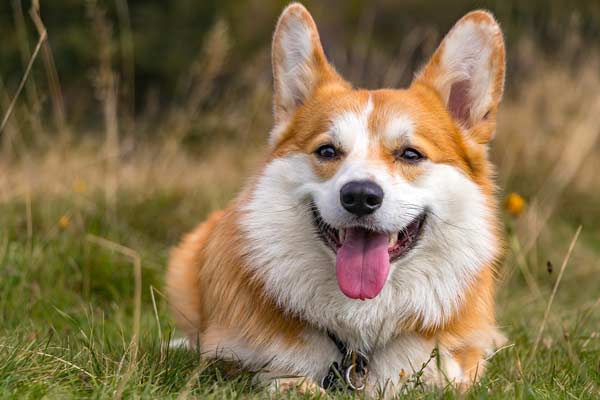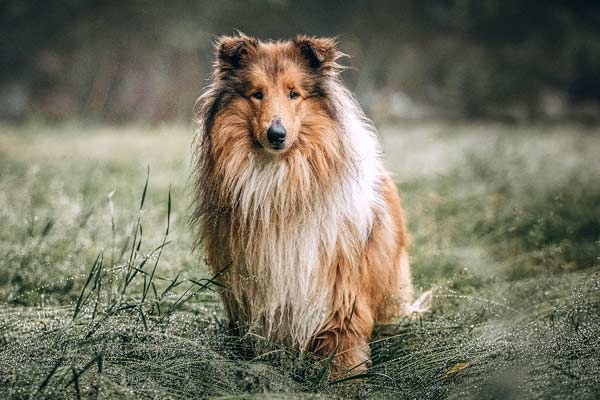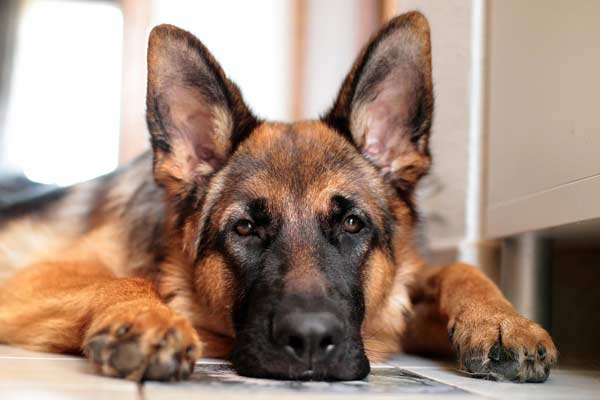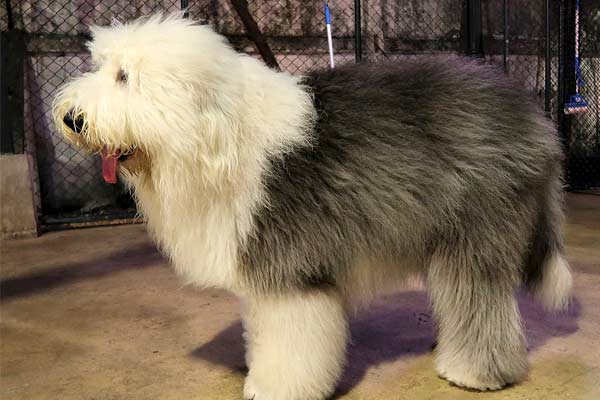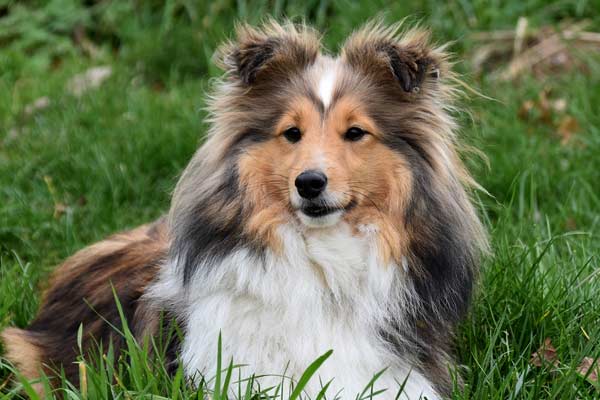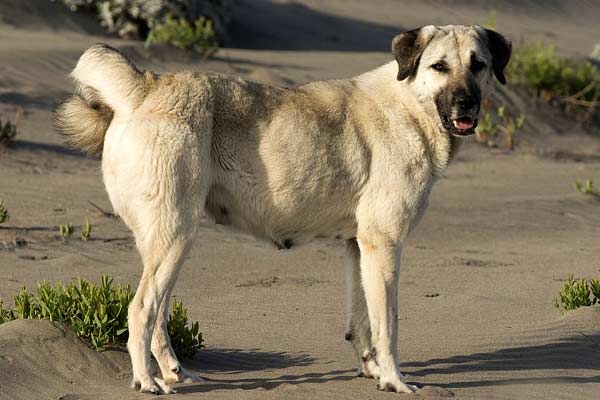Many shepherd dogs breed around, even though most people think of the German Shepherd when they hear this term. However, what is a Shepherd breed, and how do they differ from each other and other kinds of dogs?
Shepherd dog breeds have a collection of traits that make them excellent working dogs and companions. Choosing between these dogs might be difficult because of all their attributes. Each breed is different, so read on to learn more about these dogs.
1. Australian Cattle Dog
The Australian Cattle Dog, also known as a heeler, is an Australian breed designed to drive cattle in harsh terrain. Cattle Dogs are sturdy as well as active.
Australian Cattle Dogs are in high demand as working ranch canines. These dogs are more compact than many breeds but no less capable of performing the job. This breed’s intelligence is an asset, allowing the dogs to learn commands quickly.
The other name for these dogs, heelers, comes from the breed herding cattle by nipping at their heels to keep them moving. This breed stands lower to the ground than most Shepherd breeds to reduce the chances of getting kicked.
Although these dogs thrive on performing herding work, they are also ideal for families. The dog’s activity level helps make Australian Cattle Dogs perfect for families with active lifestyles. Hiking and running are excellent for these dogs.
Cattle Dogs are often good with other dogs but may try to herd bigger dogs. Younger children, including toddlers, often trigger herding instincts, resulting in children getting nipped. Older kids will usually get along best with these dogs.
When Australian Cattle Dogs are not used for herding, they excel at several activities perfect for active breeds. Teaching one of these dogs to fetch a ball or frisbee can help provide hours of fun. Agility courses are also excellent for these dogs.
Most of these dogs are between 17 and 20 inches tall and weigh up to 35 pounds. Most dogs have a distinctive blue or red merle coat. These dogs may or may not have brown-on-tan markings on the legs.
Although compact in size, these dogs are not an excellent choice for apartment or condo living. If one of these dogs lives in an apartment, the owner must provide long walks or daily visits to a dog park.
2. Australian Shepherd
The Australian Shepherd is one of the most intelligent, most work-oriented Shepherd dogs.
Standing 18-23 inches tall and weighing 40-65 pounds, these dogs have versatile sizes.
Despite the name, Aussies, as they are sometimes called, originated in the United States. Cowboys in Western states bred these dogs to assist with driving cattle. These dogs were eventually crossed with Australian herding dogs, creating the current breed.
Merle patterns are common on these dogs, along with black or red. Unlike Cattle Dogs, Aussies usually have long coats. Some of these dogs have blue eyes, one blue and one brown eye, or particolored eyes. This breed is distinctive-looking in any case.
Australian Shepherds are ambitious herders with no problem herding kids or other dogs. If you don’t use one of these dogs for herding work, you’ll need to think of activities to spark their interest.
At a minimum, anyone who owns an Aussie should plan to take their dog on a long daily walk. In addition to walks, these dogs also benefit from playing fetch and other high-energy activities.
Inexperienced owners or those unwilling to train their dogs may regret getting an Aussie. These dogs have a strong desire to please their owners but may lose interest if they sense their owners aren’t showing much leadership.
Training these dogs as early as possible is always a good idea. When you build a strong relationship with your dog before, your pet will have a greater desire to please you. Training your dog for specific tasks will make this process easier with a strong bond.
Agility and tracking are activities perfect for Australian Shepherds’ needs. These activities stimulate your dog’s herding instincts without the extra responsibility of keeping livestock.
3. Beauceron
The Beauceron is a large breed that stands out because of its similarities to Rottweilers and Dobermans. The smooth-coated black and tan dog may stand 27.5 inches tall and weigh 110 pounds.
One of the things that stands out the most about this breed is its versatility. These dogs can herd flocks much like Border Collies and guard the flocks. You won’t be disappointed when you acquire one of these dogs for herding.
These dogs are gentle and loyal, making the breed perfect for personal protection. People who live alone often find these dogs an excellent choice for personal security. The breed is naturally alert to uninvited company, whether human or animal.
Another thing that makes these dogs great protectors is their sensitivity to children and other vulnerable people. Older or disabled owners may find one of these dogs helpful for protection once trained.
One of the things you can expect is your dog patrolling the yard to ensure everything is safe. Such protectiveness comes from these dogs spending so much time guarding flocks. When these dogs are trained for protection, they take their job seriously.
These dogs have also been used for military and police work, demonstrating their versatility. The fact that these dogs can go beyond herding work shows a strong learning ability. This breed is intelligent and wants to learn.
Activities that occupy your dog’s attention as much as possible are great for stimulation if your dog isn’t a working dog. Tracking, agility, hiking with the owner on nature trails, and flyball or frisbee play are always excellent options.
Another large dog can be excellent company for this active breed. However, it is good to remember that careful introductions make all the difference. You want a second dog to be a fun companion, not something your dog sees as a threat.
4. Belgian Malinois
The Belgian Malinois is a recognizable dog breed used by many police departments as an alternative to the German Shepherd. This breed has a long history predating its use in policing.
Standing up to 26 inches tall and weighing up to 80 pounds, this breed is closely related to the Belgian Shepherd, Laekenois, and Tervuren. This versatile breed is excellent for working with cattle and sheep.
These alert-looking fawn, mahogany, or sable-colored dogs have erect ears and strong confidence. The traits that have made these dogs exceptional for herding also translate well to military work, increasing the dog’s popularity.
One of the things that prospective owners need to know about these dogs is that they require human company. A Malinois left alone in a backyard always will be a depressed dog. These dogs are dedicated to their families, making deprivation cruel.
These dogs are well-suited to obedience work, which gives the dogs a chance to shine. The breed excels at every task that it gets involved in. It’s easy to understand their popularity when you have a chance to see one of these dogs at work.
Bored dogs are unhappy and often destructive or anti-social. When these dogs are family pets, instead of working, the dogs need to have regular activities for mental stimulation. A daily walk is a minimum activity level for most.
These dogs have the intelligence and build to excel at agility and work quickly. Such activities are great for the dog’s exercise level, which helps the dogs maintain a healthy weight. Hip dysplasia and other issues are easier to prevent at a proper size.
Hikes and other outdoor activities involving the whole family are perfect for these dogs. New scents and sights are always exciting for dogs. When a dog is active enough to be tired at the end of the day, this is good for the dog.
5. Border Collie
The Border Collie is one of the most well-known Shepherd breeds. The distinctive black and white coat and the keen expression make this breed stand out from similar dogs.
Standing up to 22 inches tall and weighing 55 pounds, this dog is a more compact herding breed. Although not as significant as other similar breeds, this energetic canine has speed as an advantage, particularly when herding sheep.
The Border Collie possibly originates as far back as Viking times, when the Vikings crossed their dogs with breeds in Britain that had been influenced by Roman stock. These dogs were well-suited to the rugged area between England and Scotland.
Border Collies have a distinct herding style that many think makes this breed the best dog. When herding sheep, these dogs use a combination of stealth and speed. This unique herding style is one of the reasons these dogs excel at sheep trials.
Another asset that these dogs offer is a high intelligence level. Because these dogs are one of the most intelligent breeds, they can quickly learn new tasks. Farmers or ranchers who keep these dogs may find additional functions for which they are perfect.
Although these dogs need a task to stay happy, they are also great family dogs. These collies have an energy level perfect for kids’ needs. Activities like flyball or agility are perfect for kids to participate with dogs.
These dogs are excellent for families but maintain a degree of wariness around strangers. Border Collies also get along well with other dogs if properly introduced to the new dog, so the newcomer isn’t seen as a threat.
6. Welsh Corgi
The Welsh Corgi is one of the most miniature breeds that perform herding work. These dogs are also popular as pets, with Her Majesty Queen Elizabeth of England owning these dogs for years.
Corgis are about 28 inches tall and weigh about 30 pounds. This dog’s low profile has helped make it an effective herding dog for cattle. These dogs are alert and intelligent, which benefits them when performing herding work.
Fawn and sable are the most popular coat colors these lively dogs feature. Black and tan, as well as red, are also standard colors. These dogs have erect ears that help add to their vibrant appearance.
Welsh Corgis date back to dogs that traveled to Wales from Flanders during the Middle Ages with their owners in the weaving business. These Flemish weavers brought their livestock, including cattle and sheep.
These dogs are solid and sturdy despite their small size. The muscular build allows these dogs to easily keep pace with the cattle they herd. These dogs can navigate somewhat hilly and rocky terrain with few difficulties.
One of the things that owners love about these dogs is their independent streak. When herding, these dogs must make decisions on the fly and can’t wait for a command. A Corgi has the right instincts to help them get the job done.
As Shepherd-type dogs, these pups will never back down from a challenge. Corgis have barks that make them sound more significant than they are, serving as a deterrent. Another advantage of the loud bark is that they quickly get the attention of stock.
These dogs are affectionate and ready for cuddles or hugs when inside. However, these dogs are not needy, and you can trust them not to be super-demanding. This breed is usually inclined to be affectionate toward all family members.
Corgis love being part of family activities, even when not used as working dogs. These dogs often want to be where kids are and will enjoy the opportunity to play. Rough play with these dogs should be avoided to help prevent back injuries.
These dogs usually get along well with other dogs of all sizes. However, another Corgi or dog of a similar size is usually best. Much larger dogs could easily hurt a Corgi and end up causing a painful back injury.
Corgis are excellent work and family dogs overall. However, like all herding breeds, they need stimulation to avoid boredom and inappropriate behavior. Owners will quickly see why these dogs are popular.
7. Collie
The Collie is one of the most iconic herding breeds. Although “Lassie” made Collies famous in popular culture, this breed has a solid herding heritage. Graceful movement is one of many excellent traits.
Collies are large dogs, possibly 26 inches high and weighing up to 75 pounds. These dogs have long coats that help them adapt to weather extremes. Recognized colors according to breed standards include:
- Sable, with or without white or merle patterns
- Blue Merle, with or without white and tan
- Black, white and tan
- White, with or without merle
Collies are an ancient breed, possibly descending from dogs brought to Scotland during Roman times. These dogs have a history of working in the Scottish Highlands, primarily herding sheep. Their size and heavy coats make them perfect for this environment.
There are two coat types for Collies. One is the more familiar rough coat, which is longer and fluffier. There is also a smooth-coated variety. Rough or smooth-coated Collies may have any color patterns typical of the breed or a mix.
Collies have an athletic build that makes herding sheep an easier task. Their ears are mobile, making it easier to hear any potential predators before they close in on the flock. These dogs can move very quickly as circumstances demand.
As with other herding dogs, this breed requires regular exercise to stay happy and well-adjusted. A long walk or jog can suit this dog’s needs. If your home has a yard, this is perfect for giving your outdoor dog time, especially if you have more than one.
As independent as these dogs are when working with sheep, they thrive in settings with a lot of interaction with people. There’s a chance your Collie will want to be wherever your family is. Inclusion on hiking trips is a must for these active pups.
Although these dogs adapt to different areas quickly, they do best when pursuing outdoor activities in cooler weather. Early morning or early evening are the best times for these dogs to enjoy the outdoors. Access to fresh water is always a necessity.
Collies have an excellent reputation with children, not solely due to their popularity on TV and in books. Although a gifted working dog, this breed has become increasingly popular as a pet. Many breeders breed to preserve family-friendly traits.
An untrained dog is a mischief-loving dog. Whether used as a working dog, a pet, or a combination, Collies are responsive to training. The sooner you start training your Collie, the faster your dog will learn what you expect.
Collies will fit in with families well if they have had excellent opportunities for training. Well-adjusted puppies usually turn into well-behaved adults eager to please. One of the best things about this breed is that puppies are very responsive.
8. German Shepherd Dog
The German Shepherd Dog (GSD) is usually what people think of when they think of Shepherd breeds. GSDs are intelligent dogs and one of the most courageous breeds.
Reaching heights of 26 inches and weighing up to 90 pounds, these are large dogs. However, they are not any less agile because of their size. If anything, the dog’s size is equally helpful for herding and guarding.
Until the 19th century, shepherd breeds in Germany varied by district. Dogs from central and northern districts were most popular. Captain Max von Stephanitz, a cavalry officer, took the initiative and decided to develop a dog with superior herding abilities.
These dogs were originally developed to herd and protect sheep. The dog’s naturally athletic build makes it easier to drive flocks and fight off predators. Naturally, erect ears make hearing any possible threats easier for these dogs.
Early dogs in pop culture, like Strongheart and Rin-Tin-Tin, helped make these dogs more popular. During World War I, anti-German sentiment led to these dogs being referred to as Alsatians, a name still in use in the United Kingdom.
As agricultural jobs declined after World War II, there was a need for a new “job” for these dogs. German Shepherds have done this work ever since. The traits that make the GSD an effective Shepherd also benefit the breed in military and police work.
German Shepherds are one of the most intelligent breeds, excelling at basic obedience training and more complex tasks. One of the things that many notes about these dogs is their ability to analyze a new job. These dogs will quickly adapt to anything new.
These dogs have a strong sense of loyalty to their whole family. Another trait very endearing to families is the dog’s courage. A GSD will never back down from a threat to his loved ones, no matter how severe the danger is.
One of the first things many notice about German Shepherds in the field is how quickly they run. These dogs can keep up with other large, fast dogs very quickly. These dogs have no issues chasing away anyone or anything seen as a threat.
Most of these dogs have short double coats, although some are longhaired. Some of the coat colors include:
- Black and tan
- Bi-color
- Sable
- White
- Black
9. Old English Sheepdog
The Old English Sheepdog is one of the oldest, most adaptable herding breeds. These dogs are intelligent and gentle, making them effective learners and fun family companions.
With a height of 21-22 inches and up and a weight of up to 100 pounds, these dogs have an imposing appearance. However, this breed is not aggressive but an effective flock guardian. Predators are not as inclined to go after livestock with these dogs around.
This breed originated in Cornwall and Devonshire but, despite the name, is not a strictly English breed or a sheepdog. The dog’s bloodlines come from Scottish and Russian dogs and European breeds used as livestock guardians.
These dogs had their origins in dogs that drovers used for herding cattle. However, the traits that made these dogs well-suited to driving cattle also translated well to herding sheep. The breed as we know it today goes back to the 18th century.
Although most people are familiar with gray and white coats, several other color combinations are possible in these dogs. Blue, blue merle, and grizzle with white are also popular colors. These colors help the dog blend in with the flock.
These dogs have thick coats that help them stay dry in rainy England. Their coats are thick enough that flock owners often shear the dogs and use the hair to make yarn. This hair is waterproof and warm for anyone using it as yarn.
Sheepdogs are gifted at keeping the flock together and alerting the sheep to possible dangers. Although these dogs usually walk relatively slowly, they can run quickly when the need arises. The size makes many predators think twice.
These dogs have many qualities that make them excellent housepets and working dogs. Regardless of what activities your family enjoys, these dogs will be willing participants. Activities that involve the chance to enjoy a good run are often best.
You can expect these dogs to be watchful guardians if you have children. Sheepdogs are patient with children and unlikely to become nippy. These dogs generally have a kind attitude toward children and tolerate their antics very well.
When you have an Old English Sheepdog, you can trust these dogs to be good watchdogs. Most of these dogs will bark whenever anyone unfamiliar is around. A Sheepdog’s bark is very loud and will quickly alert you to any problems.
10. Shetland Sheepdog
The Shetland Sheepdog, or Sheltie, is one of the most miniature Shepherd breeds and one of the most popular. These dogs are intelligent, as well as energetic, and playful.
With a maximum height of 16 inches and a maximum weight of 25 pounds, these dogs can easily live in smaller spaces than many other herding dogs. However, these dogs are no less suited to the task they were bred for than their larger relatives, Collies.
These dogs resemble miniature Collies, including having many of the same coat colors. Colors that are typical for Shelties include:
- Black and white, with or without tan
- Blue merle with white, with or without tan
- Sable and white
- Sable merle with white
Shetland Sheepdogs descend from dogs bred in Scotland’s Shetland Islands. These islands are Scotland’s northernmost point and have rough, rocky terrain. In addition to sheep, these dogs have also herded Shetland ponies and poultry.
The smaller size of these dogs has helped them adapt to a harsh environment with scarce food supplies. One of the things that Sheltie owners quickly learn is that these dogs have modest nutritional needs compared to larger dogs.
Shetland Sheepdogs are an active breed, making them perfect for all kinds of herding and similar activities. These dogs are also very agile, a trait that likely grew out of their living conditions.
These dogs excel at herding trials. Because they are intelligent and fast learners, they learn agility and obedience to work efficiently. Boredom should never be an issue with these dogs’ adaptability.
Shetland Sheepdogs are sensitive to everything they see or hear in the house. Another great trait is that Shelties are excellent watchdogs willing to alert you to any perceived threat. These dogs are very affectionate, especially with children.
11. Anatolian Shepherd
The Anatolian Shepherd is a large-to-giant breed, standing as tall as 29 inches and weighing as much as 150 pounds.
Anatolian Shepherds have a variety of coat colors that include:
- Biscuit and white
- Blue fawn
- Brindle
- Fawn
- Gray fawn
- Liver
- Red fawn
- White
In addition to these coat colors, Anatolians may have black, brown, or silver masks. The long and thick coats provide protection when working in harsh climates.
Anatolian Shepherds represent one of Turkey’s oldest breeds. Artifacts from the Babylonian Empire depict dogs with similar features, showing that these dogs have origins dating back at least 4,000 years.
After World War II, dogs became popular, reaching their most incredible popularity during the 1970s. The dog’s imposing stature proved helpful after ranchers needed to find a non-lethal way of controlling wolves after the Endangered species Act was passed.
Despite performing best at protecting sheep and goats, these dogs are versatile guardians for all kinds of stock. Llamas and alpacas are some of the stock these dogs do well around. These dogs are also effective in guarding ostriches and emus.
These dogs are very protective of their territories. Although they do well with a “pack” that includes other dogs, they will run off strange dogs. Coyotes and wolves are unlikely to bother flocks when these dogs are around.
One thing that stands out for many about Anatolians is their loyalty to their families. These dogs will commit themselves to protect every human member of the family. Their protective instincts encourage them to protect other dogs and cats.
Anyone who acquires an Anatolian Shepherd must know how to show positive, assertive leadership. These dogs are devoted to their families but are used to working independently. This independent streak can cause conflict without careful boundaries.
Training helps serve as a vital way of bonding with your dog. Early training is best for Anatolians to do their best as flock guardians. Even family pets benefit from obedience training as early as possible.
Shepherd dog breeds have a lot to offer their owners. Besides having excellent working traits and high intelligence, most of these breeds are suitable for families with members of all ages. Choosing one of these breeds is a wise choice.

